The cherry barb has recently been assigned a new genus (see https://www.aquariumglaser.de/en/08-carp-like-fishes-2-barbs-minnows-carps-goldfish-etc/new-generic-names-for-former-puntius/). In the genus Rohanella – named in honor of Rohan Pethiyagoda, one of the most prominent ichthyologists of our time – there is only one species, R. titteya. DNA studies have shown that the different geographical locality variants are not genetically far enough apart to justify the establishment of separate species. R. titteya lives exclusively in Sri Lanka.
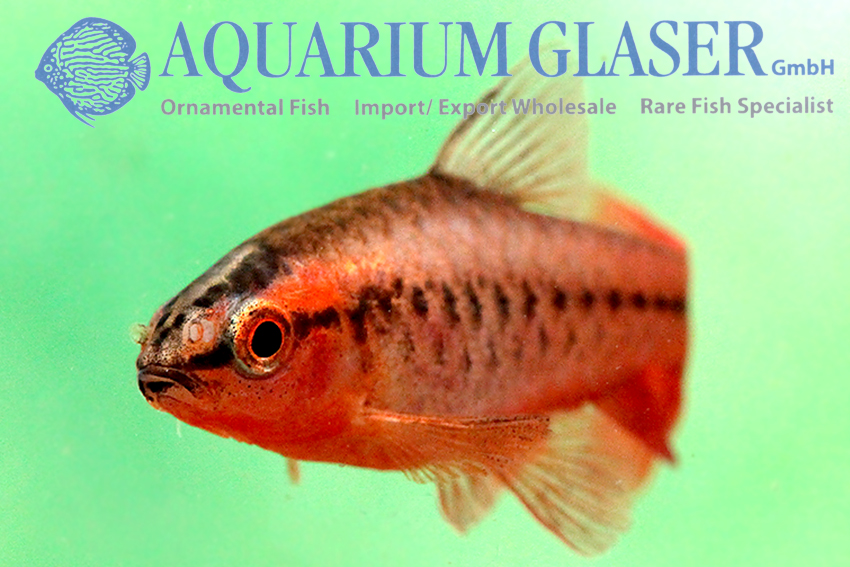
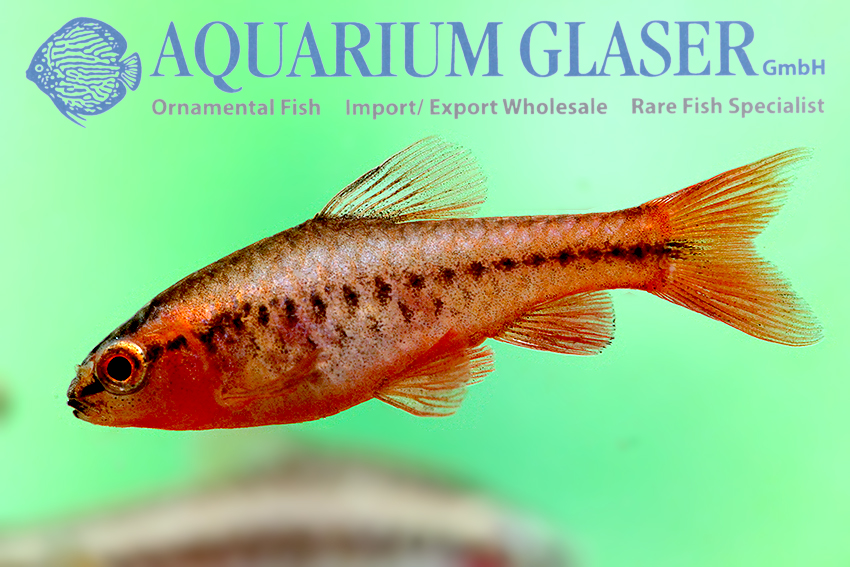
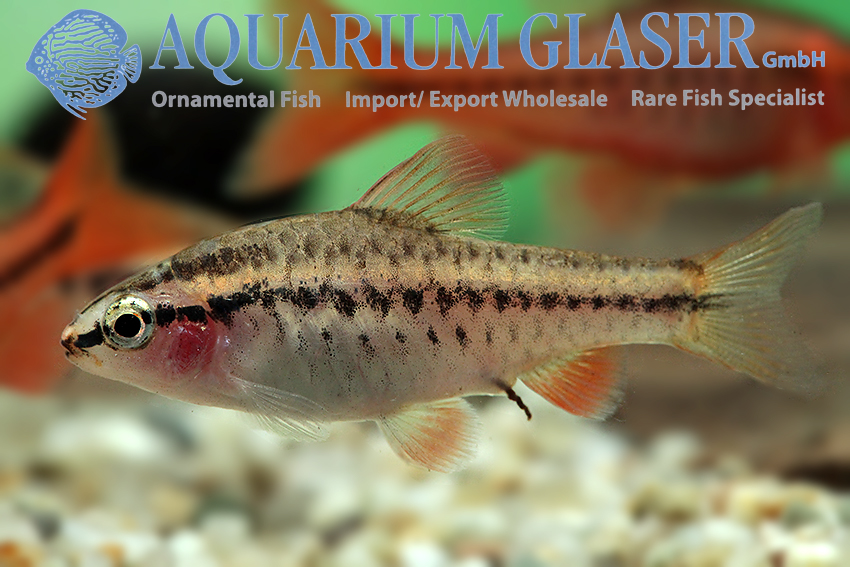
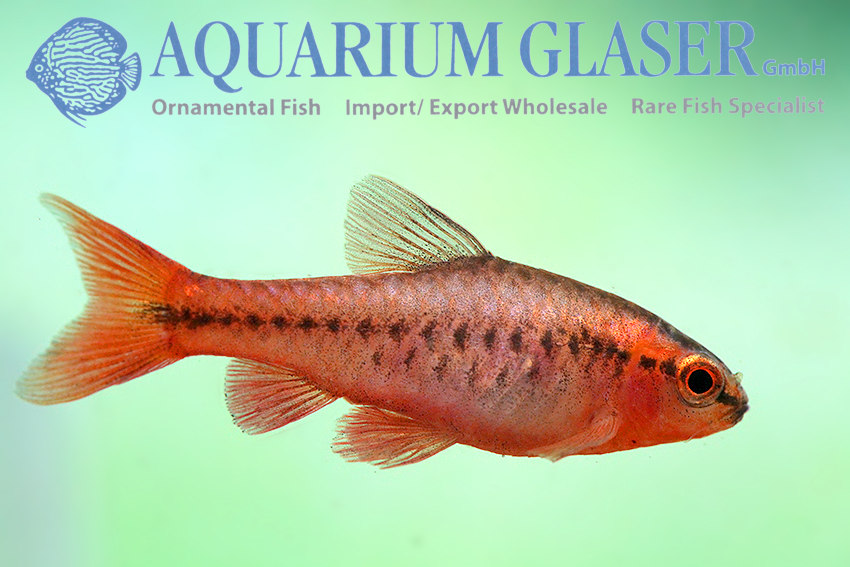
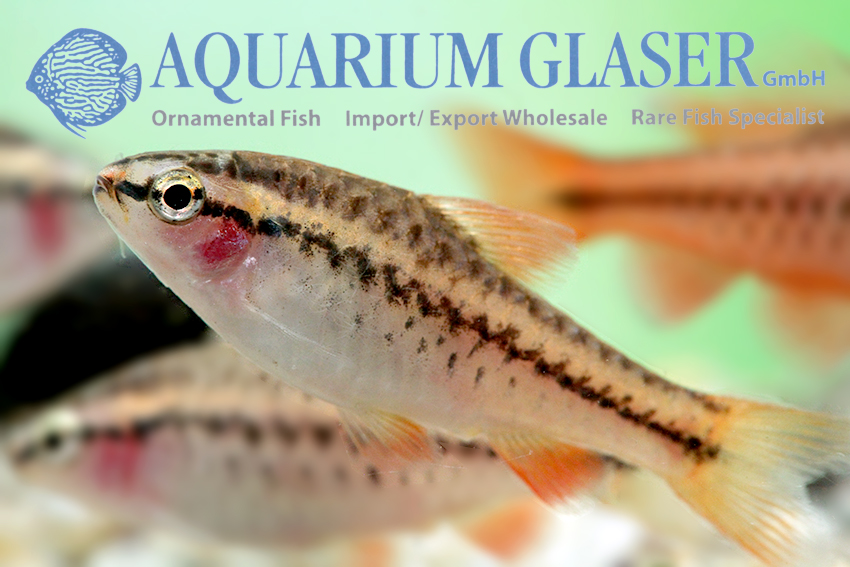
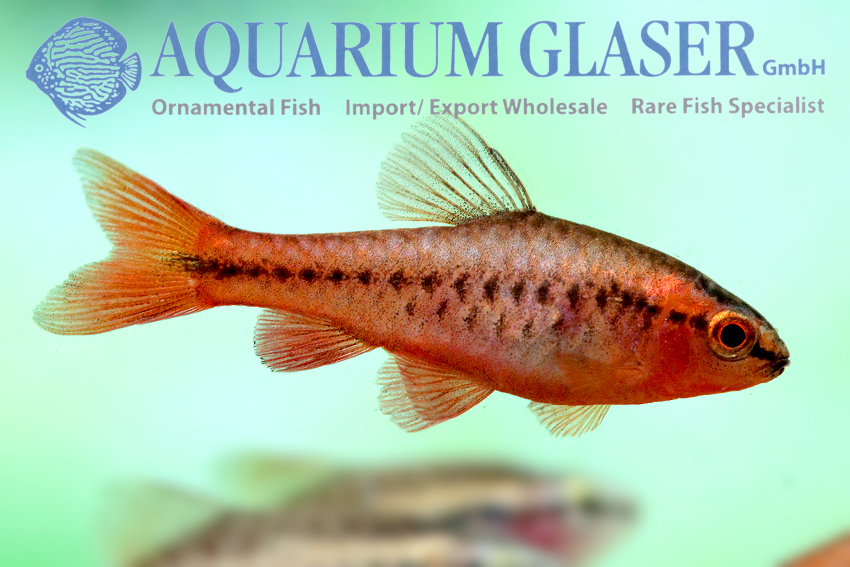
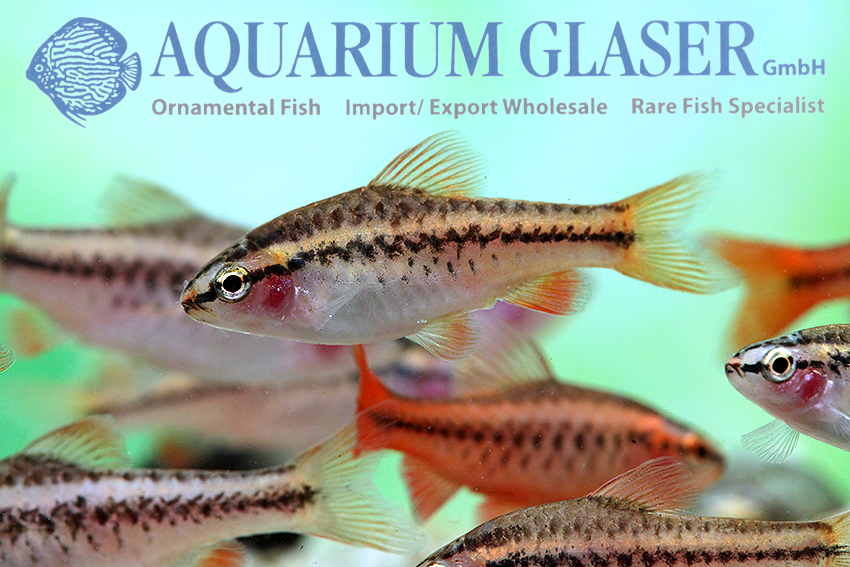
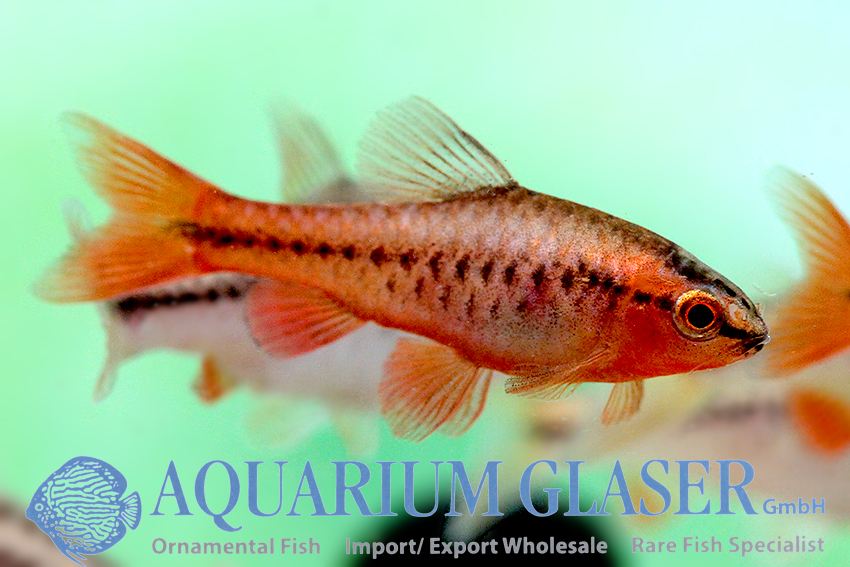
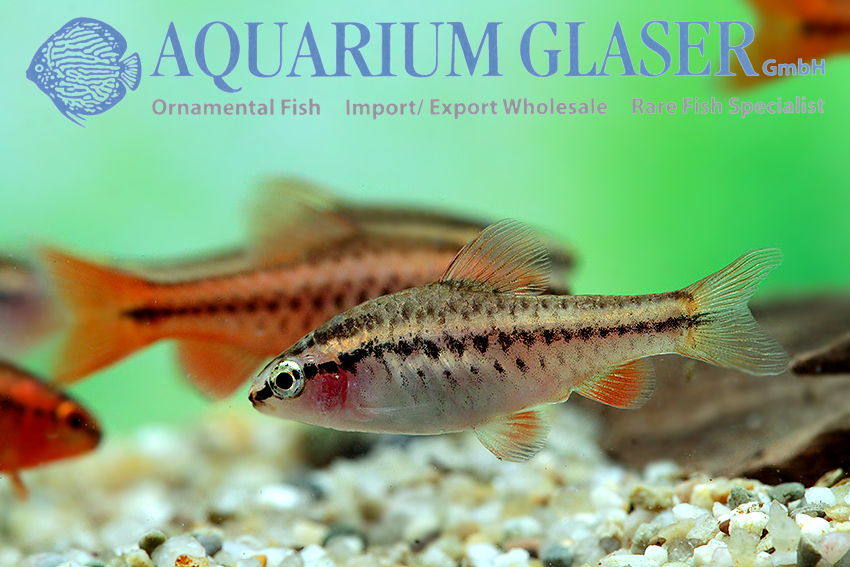
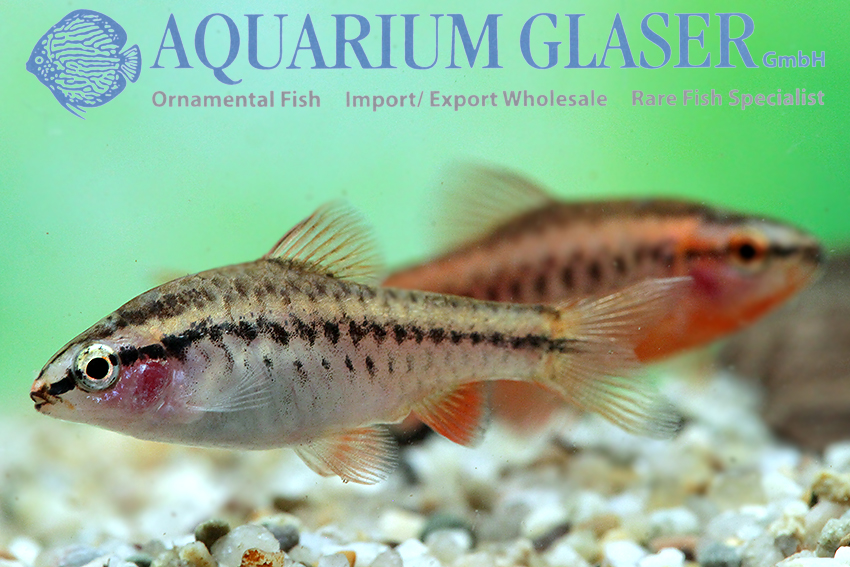
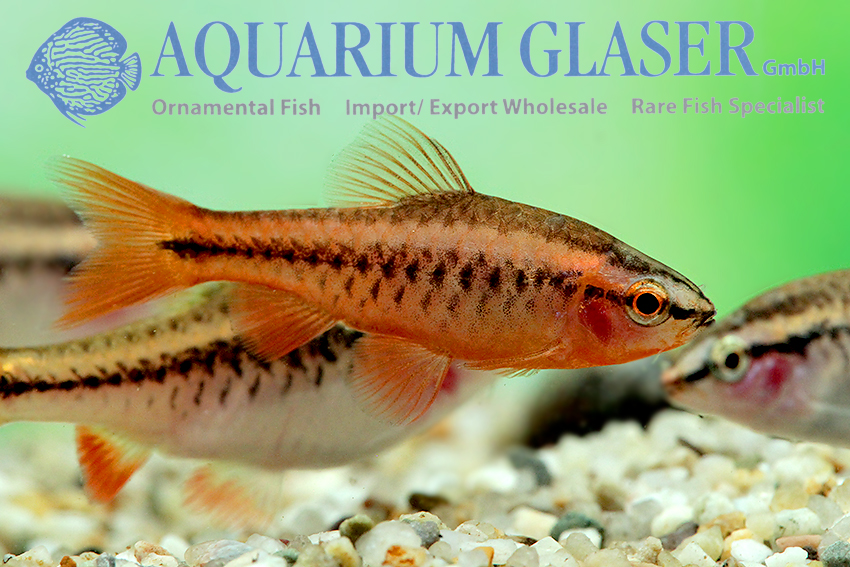
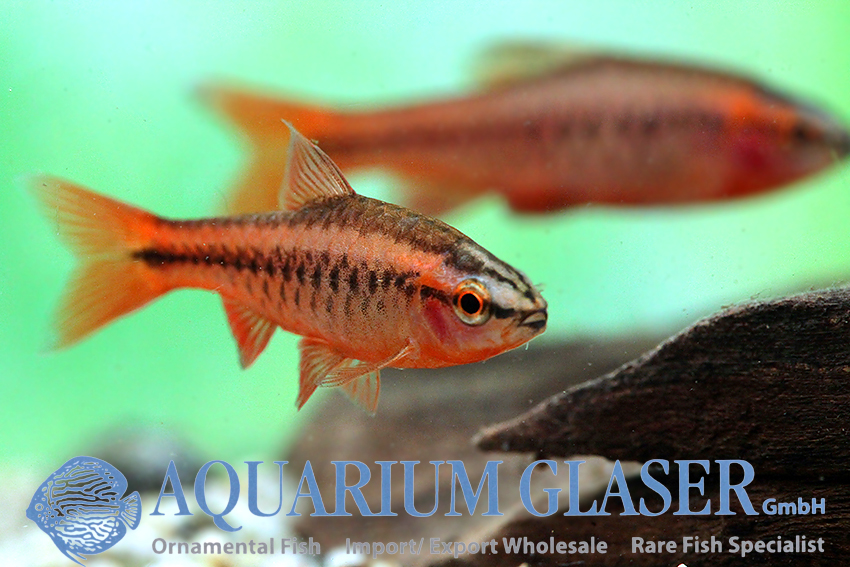
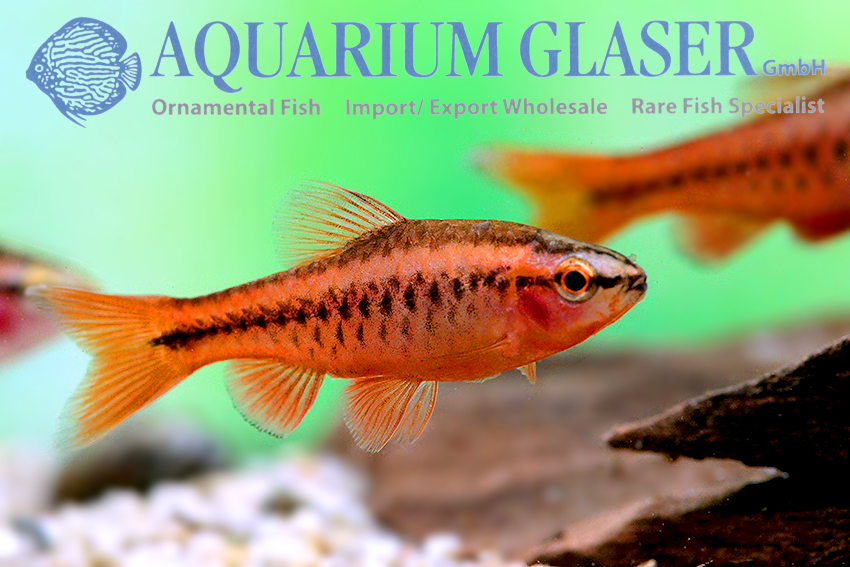
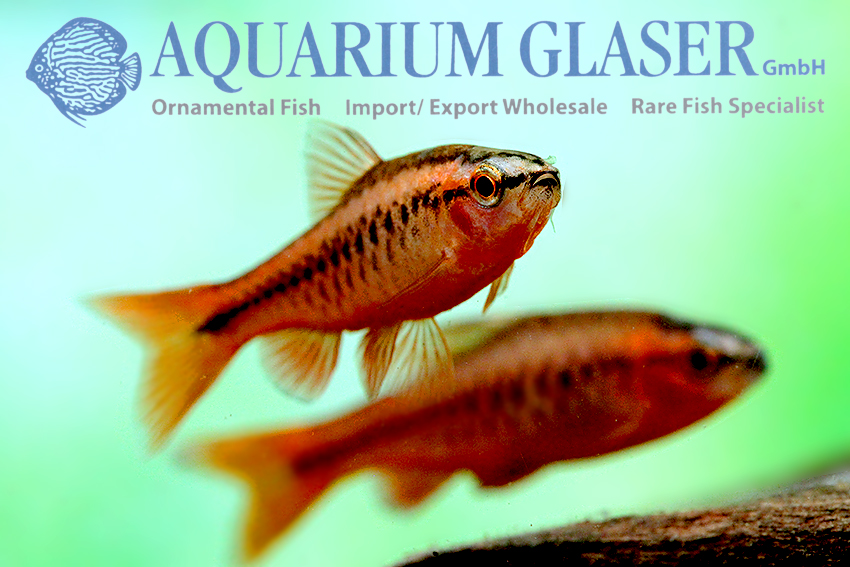
The cherry barb is one of the most beautiful small barbs in Asia. It usually grows to a length of 3-4 cm, literature reports of specimens up to 5 cm long, but these are really extreme sizes. Cherry barbs are kept in shoals. They are bottom-oriented fish that are sometimes somewhat shy. You can counteract this by providing good cover with plants. It looks beautiful when the males show off to each other.
All cherry barbs on the market are captive bred. This species lays eggs and does not practice brood care. The water temperature can be between 18 and 28°C, whereby the upper end of the specified range should be selected for breeding. Any tap water suitable as drinking water is suitable for maintenance, but the water should be soft and slightly acidic for breeding. In terms of diet, barbs are literally undemanding, but one thing is important for successful, long-term barb care: the aquarium must not be clinically clean. The so-called mulm – decomposing plant parts, excrement, food remains etc. – is an important food component for barbs, without which they will become ill in the long term.
For our customers: the animals have code 372602 on our stock list. Please note that we only supply the wholesale trade.
Text & photos: Frank Schäfer




